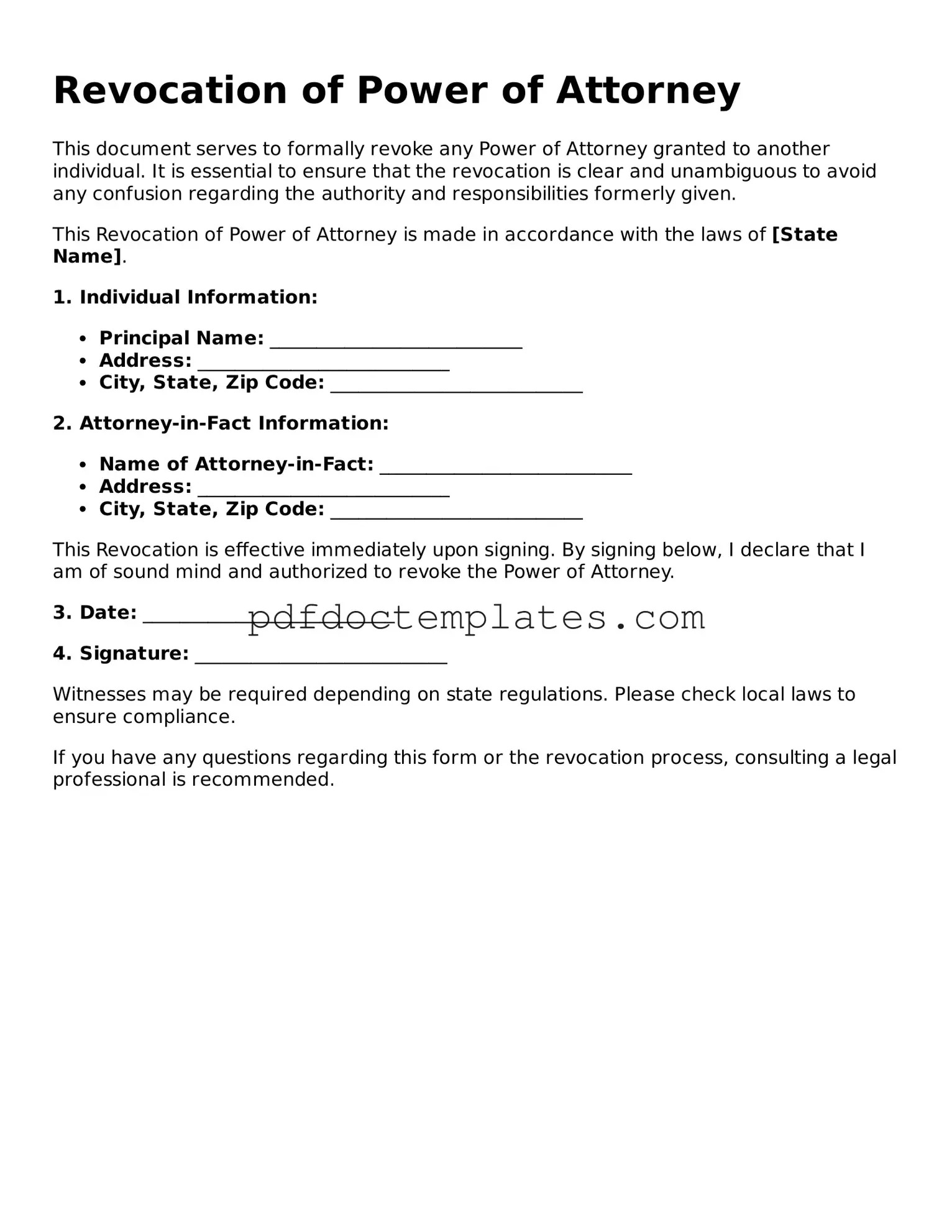Revocation of Power of Attorney
This document serves to formally revoke any Power of Attorney granted to another individual. It is essential to ensure that the revocation is clear and unambiguous to avoid any confusion regarding the authority and responsibilities formerly given.
This Revocation of Power of Attorney is made in accordance with the laws of [State Name].
1. Individual Information:
- Principal Name: ___________________________
- Address: ___________________________
- City, State, Zip Code: ___________________________
2. Attorney-in-Fact Information:
- Name of Attorney-in-Fact: ___________________________
- Address: ___________________________
- City, State, Zip Code: ___________________________
This Revocation is effective immediately upon signing. By signing below, I declare that I am of sound mind and authorized to revoke the Power of Attorney.
3. Date: ___________________________
4. Signature: ___________________________
Witnesses may be required depending on state regulations. Please check local laws to ensure compliance.
If you have any questions regarding this form or the revocation process, consulting a legal professional is recommended.
